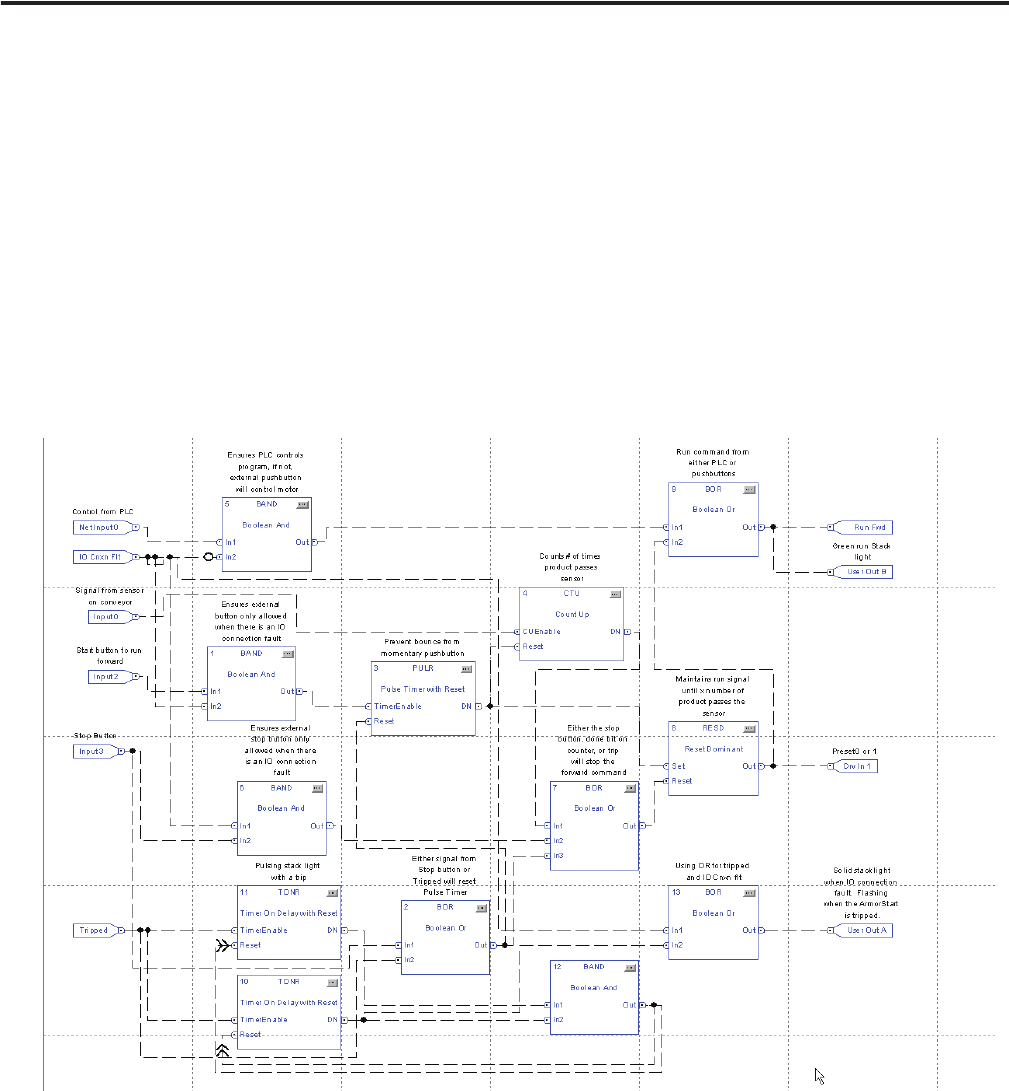Instruction Manual
Table Of Contents
- Front Cover
- Important User Information
- Where to Start
- Table of Contents
- Preface
- Chapter 1
- Chapter 2
- System Layout and Wiring
- Before You Begin
- What You Need
- Follow These Steps
- Planning Your ArmorStart Panel Layout and Wiring
- Wiring Your ArmorStart Controllers
- Connecting the DeviceNet ArmorConnect to Your ArmorStart Device
- AC Supply Considerations for Bulletin 284 Units
- Group Motor Installations For North American and Canadian Markets
- Cabling and Installation Guidelines
- DeviceNet Network Installation
- Electromagnetic Compatibility
- System Layout and Wiring
- Chapter 3
- ArmorStart DeviceNet Configuration
- Before You Begin
- What You Need
- Follow These Steps
- Open an Existing Project in RSLogix 5000 Software
- Configure the DeviceNet Network by Using RSNetWorx Software
- Add a Scanner Module to Your ControlLogix Project
- Generate ArmorStart Tags by Using the Tag Generator Tool
- Download Controller File and Test ArmorStart Tags
- ArmorStart DeviceNet Configuration
- Chapter 4
- Chapter 5
- Faceplate Logix Integration
- Before You Begin
- What You Need
- Follow These Steps
- Import the ArmorStart Add-On Instructions
- Reassign Add-On Instruction Input and Output Parameter Data Types
- Modify ArmorStart Add-On Instruction for Equipment Status Faceplate
- Integrate ArmorStart AOI into Your Application Program Routines
- Integrate Your ArmorStart Device Application
- Add Alarm Logic for Alarm History Faceplate
- Download the Project
- Faceplate Logix Integration
- Chapter 6
- Chapter 7
- ArmorStart System Application Guide
- Before You Begin
- What You Need
- ArmorStart System Overview Display
- ArmorStart Device Faceplate Overview
- ArmorStart Device Faceplate - Fault Indication View
- Last Fault, Fault Description, and Fault Action
- ArmorStart Device Faceplate - Configuration Status View
- ArmorStart Device Faceplate - Trending View
- ArmorStart Device Faceplate - Online Help Options
- ArmorStart System Application Guide
- Appendix A
- Logix Communication and Controller Configuration
- Configuring PC Communication
- Configure the EtherNet/IP Driver
- Load the Controller Firmware Serially
- Assign IP Addresses
- Ethernet Module Firmware Update Using ControlFLASH Utility
- Browse the EtherNet/IP Network Devices
- Load the Controller Firmware
- Create a New Project File in RSLogix 5000 Software
- Configure Your Ethernet Module
- Logix Communication and Controller Configuration
- Appendix B
- Appendix C
- Back Cover/Rockwell Support

84 Publication IASIMP-QS015C-EN-P - August 2011
Chapter 4 ArmorStart Local Control Configuration
DeviceLogix Programming Example
This example is a combination of different modes that can be used together in an application for the 284D
ArmorStart device. A logic controller ladder logic program is controlling the ArmorStart device (auto
control). In the event of an I/O connection fault, the external push buttons (manual control) will be allowed
to control the ArmorStart and local I/O. A tripped condition, whether in manual or auto control, will
provide a status indication of a trip using a stack light (controlled by output A). An IO Connection fault is
also indicated on the same stack light. In an IO Connection fault, the stack light will be steady state. If both
happen, the stack light will remain solid. In addition to the fault or tripped indication on the stack light, a
second stack light is used to indicate the ArmorStart device is given a run command either from the PLC
processor or the push buttons. Drive input 1 is used to command the preset speed of the drive in manual
control.
DeviceLogix Example
The automatic (PLC processor) controlled portion of the DeviceLogix example shows the network input 0
and IO Connection fault negated to provide an output. The Boolean OR gate is in place for a second input
that is used later in the example. If there is an IO Connection fault, the PLC processor will not be able to
control the DeviceNetLogix device.










